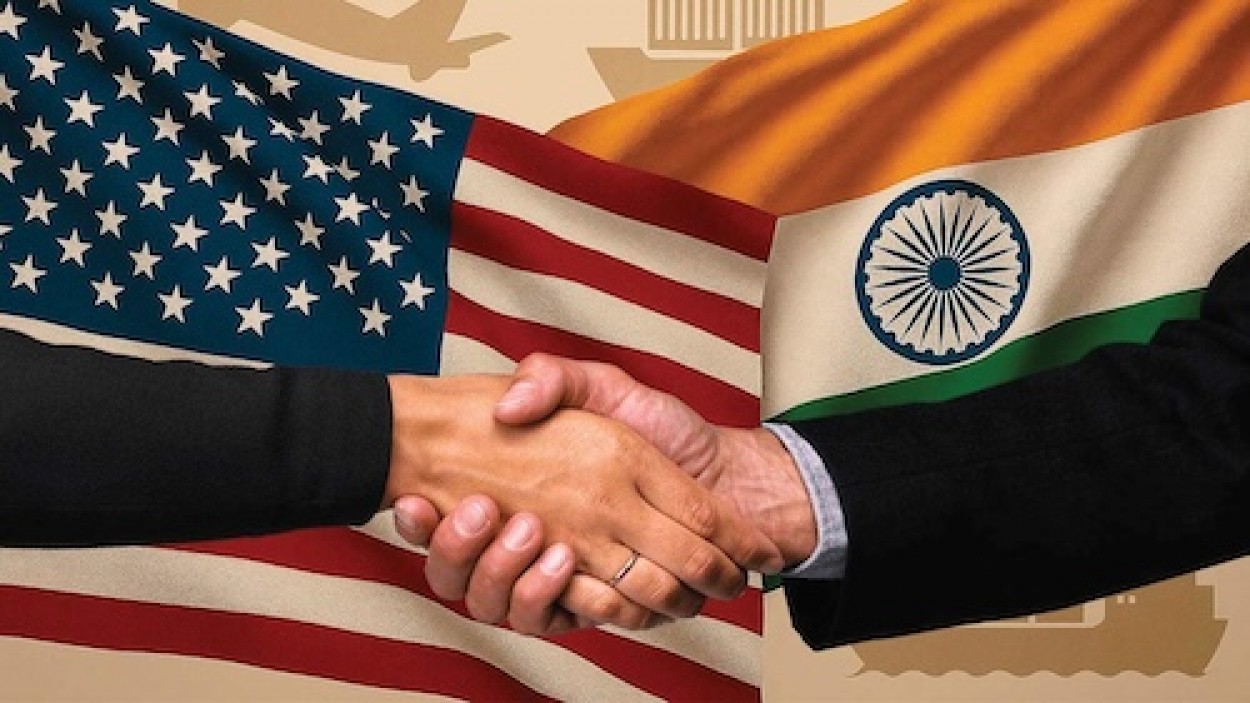
India–U.S Trade Talks and the Dairy Sector: Navigating Between Diplomacy and Domestic Survival
Pashu Sandesh, 16 July 2025
India and the United States are advancing toward a bilateral trade deal aimed at boosting economic cooperation. A key point of contention is the opening of the Indian dairy sector to U.S. imports. The U.S. is demanding lower tariffs and removal of non-tariff barriers (NTBs), especially certification requirements related to animal feed.
India’s dairy sector, however, is not just an economic engine but a rural livelihood system involving over 80 million small and marginal farmers, many of them women. Any uncalibrated disruption to this finely balanced system—especially from cheap, subsidized imports could destabilize this ecosystem. For India’s policymakers, this is not just about tariffs and quotas—it is a battle to protect the backbone of rural India.
In reality, this is a philosophical clash as much as a trade dispute: industrialized, capital-heavy farming versus decentralized, subsistence-linked production. The former sees dairy as a global commodity; the latter, as a tool of social equity.
India’s Dairy Sector: More Than Just Milk
India is the world’s largest producer and consumer of milk, contributing over 23% of global output. But this isn’t driven by large-scale industrial farms, it is a story written in the margins, by 80 million rural households, most of them small and marginal farmers, and a significant number led by women.
The average Indian dairy farmer owns two to three animals. Unlike the U.S., where a dairy farm may have 500–1,000 cows, the Indian model is decentralized, community-led, and rooted in cooperatives like Amul and Nandini. This isn’t just an economic model; it is a social contract born of the White Revolution, which transformed rural India into a self-sustaining engine of growth.
Why Dairy Is a Red Line for India
New Delhi has made it clear that dairy and agriculture are “red lines” in negotiations. Unlike sectors such as automobiles or spirits, where phased liberalization is being considered, dairy remains tightly defended. There are both political and economic reasons behind this stance.
First, dairy is a core source of income for rural women and landless laborers. It is often the only consistent daily earning in a household. Second, the sector is deeply integrated into India’s food security architecture. Undermining it could destabilize not only livelihoods but nutrition outcomes as well.
Third and perhaps most critically, the cooperative model is underpinned by trust and collective ownership. If markets are flooded with cheaper imports, the first casualty will be this trust, as farmers are forced to sell below cost or abandon dairying altogether.
Key Issues
- Livelihood Risk
- Even a 15% drop in domestic milk pricescould result in Rs 1.03 lakh crore annual loss for farmers (SBI estimate).
- The cooperative modelmay be undermined if private processors shift toward cheaper imports.
- Import Dumping Threat
- The U.S. dairy industry operates at scale and frequently deals with overproduction.
- Surplus exports to India may flood the market, harming domestic price stability.
- Cultural & Consumer Standards
- India’s requirement for vegetarian feed-based milk certificationaligns with religious sentiments and consumer choice.
- S. opposition at WTO poses a challenge to India’s regulatory autonomy.
- Strategic Sector Status
- Dairy contributes over 4% to India’s GDP, more than the total value of rice and wheat combined.
- It is also a pillar of nutrition programssuch as mid-day meals and anganwadis.
What’s at Stake for Cooperatives and the Processing Industry?
Leaders in India’s dairy cooperatives and processing industry must prepare for both scenarios—with and without a trade deal. While current signals from the government suggest that dairy will remain protected, complacency would be unwise.
If market access is conceded in any form—via quotas, special economic zones, or selective tariff reductions—processors may face intense price competition. This could impact the viability of value-added products like cheese, butter, and skimmed milk powder. Cooperative structures, which return up to 70% of revenue back to farmers, may be forced to compromise to remain competitive. Moreover, any disruption to procurement volumes would affect allied industries—veterinary services, fodder suppliers, cold chains, and packaging.
What Can Be Done
India needs a forward-looking, layered response:
- Reinforce NTBs with Science: Strengthen the justification for current certification norms with scientific, health-based, and consumer preference data. Engage with global food safety bodies to back India’s position multilaterally
- Build Dairy Competitiveness: Invest more in breed improvement, fodder innovation, and digitization of milk collection. India’s production cost per liter remains higher than the global average—this must be corrected.
- Quarantine Dairy from Negotiations: Just as India excluded agriculture in previous FTAs, dairy must be ring-fenced in any India–U.S. deal. Sectoral carve-outs are both legally permissible and politically advisable.
- Stakeholder Mobilization: Cooperatives must continue to sensitize policymakers and the public on the sector’s vulnerabilities. A united front—industry, government, and civil society is essential.
- WTO Strategy: India must counter U.S. pressure through WTO-compliant arguments while simultaneously building coalitions with other developing countries facing similar threats.
Conclusion
The Indian dairy sector is a strategic socio-economic buffer, not merely a commodity market. While trade expansion is important, it must not compromise rural income security, cooperative federalism, or nutritional self-reliance. Trade deals are necessary. They bring capital, technology, and market access. But they must not come at the cost of India’s most fragile economic constituents.
A carefully structured negotiation approach must protect India’s dairy ecosystem while leaving room for bilateral goodwill in less sensitive sectors. India must negotiate not just with facts and figures but with a deep understanding of what milk represents in this country: sustenance, security, and self-respect.











































































